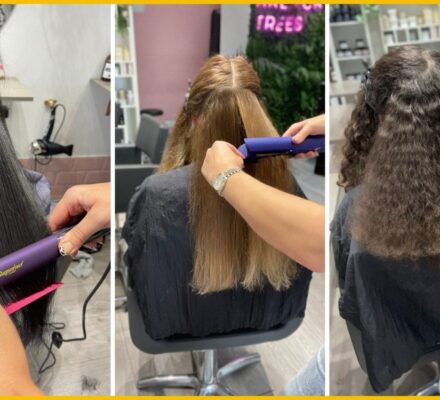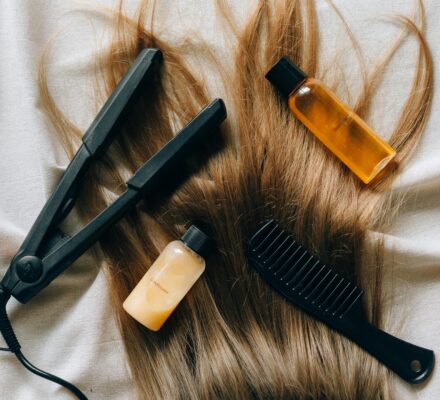Choosing the right hair straightener can make a world of difference in your daily styling routine, ensuring your hair looks sleek and feels healthy. In “How Do I Choose A Hair Straightener?”, you’ll discover essential tips and factors to consider, such as plate material, heat settings, and additional features that cater to your specific hair type. Whether you have fine, thick, or curly hair, this guide will help you find the perfect straightener to achieve gorgeous, salon-quality results right in the comfort of your own home. Get ready to elevate your hair game effortlessly and confidently! How do I choose a hair straightener?
Choosing a hair straightener can be a bit overwhelming, can’t it? With so many brands, models, and features to choose from, deciding on the right one for your hair can feel like an impossible task. In this guide, we’ll walk you through everything you need to know to make an informed decision. So, sit back, relax, and let’s get into the nitty-gritty of finding your perfect hair straightener!
Understanding Your Hair Type
Before diving into the world of hair straighteners, it’s essential to understand your hair type. This knowledge will guide you in selecting a product that suits your specific needs.
Assessing Hair Texture and Thickness
Identifying whether your hair is fine, medium, or thick can help you choose a straightener that offers the right temperature settings and plate materials.
- Fine Hair: Prone to damage and usually requires lower heat settings.
- Medium Hair: Can tolerate higher temperatures but still needs to be treated with care.
- Thick Hair: Often needs more heat and advanced technology for effective straightening.
Recognizing Hair Conditions
Your hair’s overall health—whether it’s dry, oily, or chemically treated—also influences the type of straightener you should opt for.
- Dry Hair: Needs a straightener with adjustable temperature settings and ceramic or tourmaline plates for even heat distribution.
- Oily Hair: May benefit from titanium plates that offer consistent and high heat.
- Chemically Treated Hair: Requires gentler, lower-temperature devices to avoid further damage.
Key Factors To Consider
Once you’ve assessed your hair type and condition, there are crucial factors to keep in mind when selecting a hair straightener.
Plate Material
The material of the plates is one of the most critical features of a hair straightener. Here’s a clear breakdown to help you understand the differences:
| Plate Material | Pros | Cons |
|---|---|---|
| Ceramic | Provides even heat distribution, reduces frizz, and is good for most hair types. | May not reach high temperatures needed for very thick or coarse hair. |
| Tourmaline | Emits negative ions that counteract hair static, resulting in smoother hair. Suitable for damaged and fine hair. | Usually more expensive. |
| Titanium | Heats up quickly, maintains high temperatures, and is ideal for thick hair. | Can become too hot for fine or damaged hair. |
| Mixed Materials | Combines benefits of multiple materials like ceramic and tourmaline, striking a balance for different hair types. | Varies widely in cost and quality; more complex to choose the right combination. |
Temperature Settings
Different hair types require different heat settings. Opt for straighteners with adjustable temperature controls to avoid unnecessary damage.
- Low Heat (300°F and below): Ideal for fine or damaged hair.
- Medium Heat (300°F – 380°F): Suitable for normal hair types.
- High Heat (380°F and above): Necessary for thick or coarse hair to achieve desired results.
Plate Size
The size of the plates also matters depending on the length and type of your hair.
- Narrow Plates (1 inch or less): Great for short hair and touch-ups.
- Medium Plates (1 to 1.5 inches): Versatile for most hair lengths and types.
- Wide Plates (1.5 inches and above): Best for long, thick hair as they cover more area, reducing styling time.
Advanced Features
A good hair straightener often comes with advanced features that can make a world of difference in the styling process.
Ionic Technology
hair straighteners with ionic technology emit negative ions that help to break down water molecules and lock in moisture, giving your hair a shiny, frizz-free finish.
Infrared Heating
infrared heating provides consistent, even heat distribution and is gentler on the hair, reducing the risk of damage.
Floating Plates
Floating plates adjust to your hair’s thickness as you style, ensuring an even application of heat and minimizing hair snagging.
Auto Shut-off
Safety first! An auto shut-off feature ensures your straightener will turn off after a certain period, preventing potential hazards.

Popular Brands and Models
Understanding what the market offers can help you narrow down your choices. Here are some well-reviewed brands and models for different needs.
For Fine Hair: BaBylissPRO Nano Titanium
- Features: Adjustable heat settings, titanium plates, and fast heat-up time.
- Pros: Great for quick styling without causing damage.
- Cons: Can be too hot if not used carefully.
For Medium Hair: CHI Original Ceramic Hairstyling Iron
- Features: Ceramic plates, adjustable heat settings, and quick heat-up.
- Pros: Versatile for various hair types and maintains consistent heat.
- Cons: May not reach the high temperatures required for very thick hair.
For Thick Hair: ghd Platinum+ Professional Performance Styler
- Features: Predictive technology, advanced heat sensors, and high-quality tourmaline plates.
- Pros: Superior for thick, curly hair requiring more intense heat.
- Cons: Higher price point.
Budget-Friendly Option: Remington S9500 Pro 1″ Pearl Ceramic Flat Iron
- Features: Pearl ceramic plates, temperature controls, and instant heat-up.
- Pros: Affordable and effective for most hair types.
- Cons: May not last as long as higher-end models.
Maintenance and Care Tips
To ensure your hair straightener lasts and continues to perform optimally, follow these maintenance and care tips:
Regular Cleaning
Over time, product residue can build up on the plates, affecting performance. Clean the plates regularly with a damp cloth and mild soap. Avoid harsh chemicals that could damage the surface.
Storage
Store your straightener in a cool, dry place. Use a heat-resistant mat or pouch to protect the device and prevent accidental damage.
Safety Precautions
Always unplug your straightener after use and allow it to cool before storing it away. Inspect the cord regularly for any signs of wear and tear to avoid electrical hazards.

How to Use a Hair Straightener Properly
Using your hair straightener correctly is crucial for achieving the best results while minimizing damage.
Preparation
Start with clean, dry hair. Heat protectant sprays are a must to shield your hair from potential heat damage.
Sectioning
Divide your hair into manageable sections. Smaller sections allow for more even heat distribution and better results.
Technique
Clamp the straightener close to the roots and glide down to the ends in a smooth, continuous motion. Avoid holding the straightener on any one spot for too long to prevent burning your hair.
Future Trends in Hair Straightening Technology
Hair straightening technology continues to evolve, offering more advanced features to cater to diverse hair types and styling needs.
Smart Technology
Expect to see more “smart” straighteners that adjust temperature settings based on your hair type and moisture levels, ensuring optimal results with minimal damage.
Eco-Friendly Options
Sustainability in beauty products is on the rise. Look out for straighteners made from eco-friendly materials and energy-efficient designs.

Conclusion
Choosing the right hair straightener comes down to understanding your hair type, assessing the critical features, and knowing the top brands that cater to your unique needs. With the information provided in this guide, you’re now equipped to make an informed decision that will help you achieve the sleek, stylish hair you desire.
It’s all about finding a balance between functionality and your specific hair needs. So, go ahead and start exploring your options. In no time, you’ll find the perfect hair straightener that works wonders for your hair type and condition. Happy styling!



